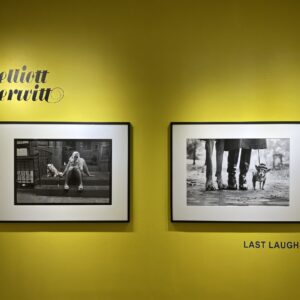Part of the reason there is such consistent angst surrounding the Whitney Biennial is that it offers such a tantalizing set of opportunities. To step out into the fray and make a statement about the freshest contemporary art of the past two years is a risky endeavor, fraught with the challenges of seeing patterns in data that is inherently conflicting and noisy. But this is what makes it so exhilarating and exciting – we’re ardently hoping that this landmark show will tell us something meaningful about the art of the present, so much so that we often place unrealistic expectations on its ability to collapse complexity into insight.
Unfortunately, the Whitney Biennial has wandered so far off course in the past decade that it no longer remotely resembles the ideal that we all carry in our heads. It’s not just about art made in the past two years, it’s not just American art (as the museum’s title/mission would normally indicate), it’s not organized by the Whitney curators and does not reflect their opinion of the art of this moment, and it’s not even a singular voice, but a collection of interleaved and often competing visions. No wonder we have such an easy time picking it apart – it’s become a collection of seemingly disconnected group shows put together by outsiders. More broadly, without any boundaries or definitional edges, we’ve become skeptical that the Biennial can answer our urgent questions, and so we enter ready to be disappointed instead of feverish with anticipation.
None of this year’s curators (Stuart Comer, Chief Curator of Media and Performance Art at MoMA, Anthony Elms, Associate Curator at the Institute of Contemporary Art, Philadelphia, and Michelle Grabner, artist and Professor in the Painting and Drawing Department at the School of the Art Institute, Chicago) comes from a particular position of strength in terms of photographic knowledge, so it isn’t at all surprising that their selections could so thoroughly miss the disruptions going on in contemporary photography. There are a few flashes of connection to important photographic issues of the day – the object/sculptural quality of photographs, the investigation of photographic archives, etc. – but clearly, photography and its dizzying explosion and evolution over the past two years were not a centerpiece in the minds of any of these esteemed curators.
What follows is a slideshow of the photography that is presented here, with some short description and commentary for each artist/image. While to my eye this group isn’t remotely representative of the current status of contemporary photography (even in the smartest of its selections), it does offer some indirect clues to how those outside the photography bubble slot the medium into the larger framework of contemporary art. So ponder these choices not as an authoritative voice on the status of the medium, but as a set of photographic tangents that can potentially connect you to some unexpected ideas.



















